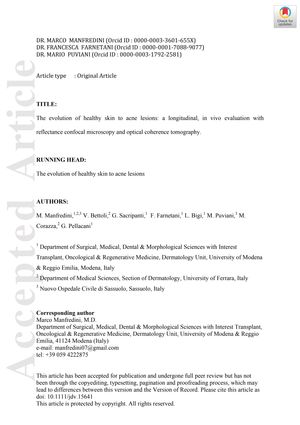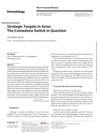The Evolution of Healthy Skin to Acne Lesions: A Longitudinal, In Vivo Evaluation with Reflectance Confocal Microscopy and Optical Coherence Tomography
April 2019
in “
Journal of the European Academy of Dermatology and Venereology
”

TLDR Acne lesions start with changes in hair follicles and increase in inflammation, suggesting a cycle that could affect treatment strategies.
In a 2019 study involving ten patients with mild to moderate acne, researchers used in vivo reflectance confocal microscopy (RCM) and dynamic optical coherence tomography (D-OCT) to observe the evolution of acne lesions over six weeks. They discovered that the formation of acne lesions was preceded by an increase in large bright follicles and a decrease in normal follicles, indicative of infundibular keratinization, followed by an increase in inflammation parameters. These changes suggest a pathologic cycle involving early changes in pilosebaceous units before inflammatory events. The study also introduced the concept of an "acneization field" and noted limitations such as a small sample size and the inability to detect deep dermal inflammatory cells. The findings emphasize the complex relationship between hyperkeratinization and inflammation in acne development and the potential implications for treatment assessment.

